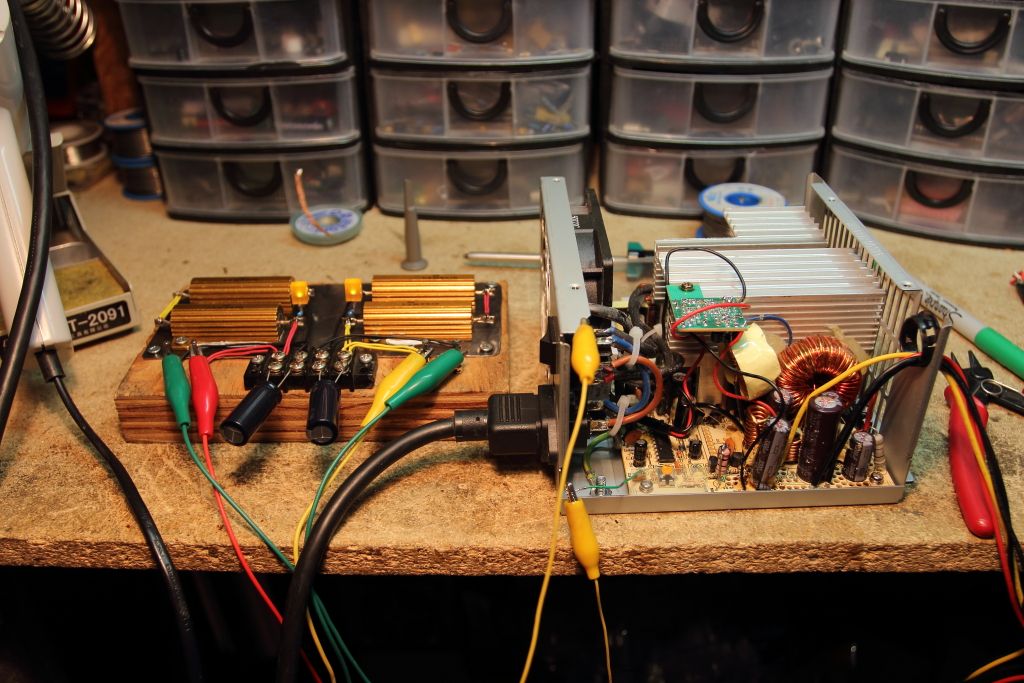Normally I'd look for another power supply but I'm extremely short sources on where to find another PSU right now so I have to make a compromise. 
AT form factor high wattage power supplies are hard to come by these days so I'm grabbing a cheap low wattage ATX power supply and making that work.
I pulled an SPI 350W rated (probably 250w) ATX supply out of an untested Pentium D machine. Now that I have it on he bench I can tell that the lone 16v 3300uf cap is bulged and the remaining 10v 3300uf and 10v 2200uf are TEAPO, so it's safe to say they'll need to go as well. First issue is all I got are Panasonic 16v 2200uf caps. I know normally it's not a good idea to use lower value caps but this thing is going into a less demanding system (300 peak max) so will it be fine?
Second is that with PWR_ON grounded and a hard drive plugged in as a load the thing sqeals like a madman. The +5 and +12 are nice and stable and +5 has 4mv AC ripple but +12 has 128mv. That doesn't seem right. Should I assume the squeal is attributed to the extremely high ripple, not enough of a load or simply it being a crappy Sparkle?

AT form factor high wattage power supplies are hard to come by these days so I'm grabbing a cheap low wattage ATX power supply and making that work.
I pulled an SPI 350W rated (probably 250w) ATX supply out of an untested Pentium D machine. Now that I have it on he bench I can tell that the lone 16v 3300uf cap is bulged and the remaining 10v 3300uf and 10v 2200uf are TEAPO, so it's safe to say they'll need to go as well. First issue is all I got are Panasonic 16v 2200uf caps. I know normally it's not a good idea to use lower value caps but this thing is going into a less demanding system (300 peak max) so will it be fine?
Second is that with PWR_ON grounded and a hard drive plugged in as a load the thing sqeals like a madman. The +5 and +12 are nice and stable and +5 has 4mv AC ripple but +12 has 128mv. That doesn't seem right. Should I assume the squeal is attributed to the extremely high ripple, not enough of a load or simply it being a crappy Sparkle?
 <----Computer says I need more beer.
<----Computer says I need more beer.


Comment